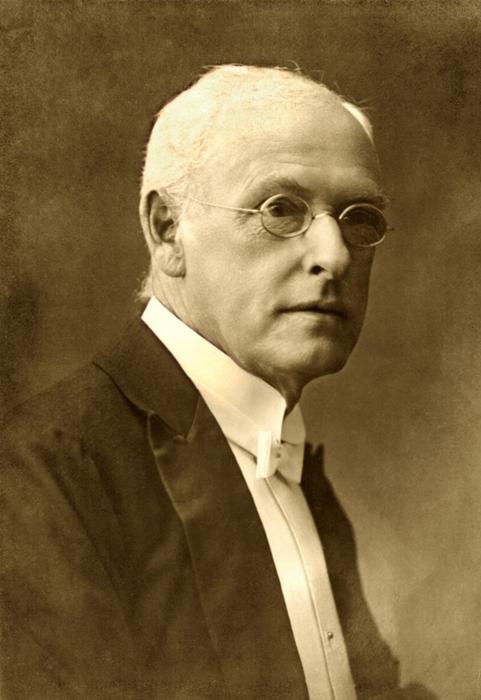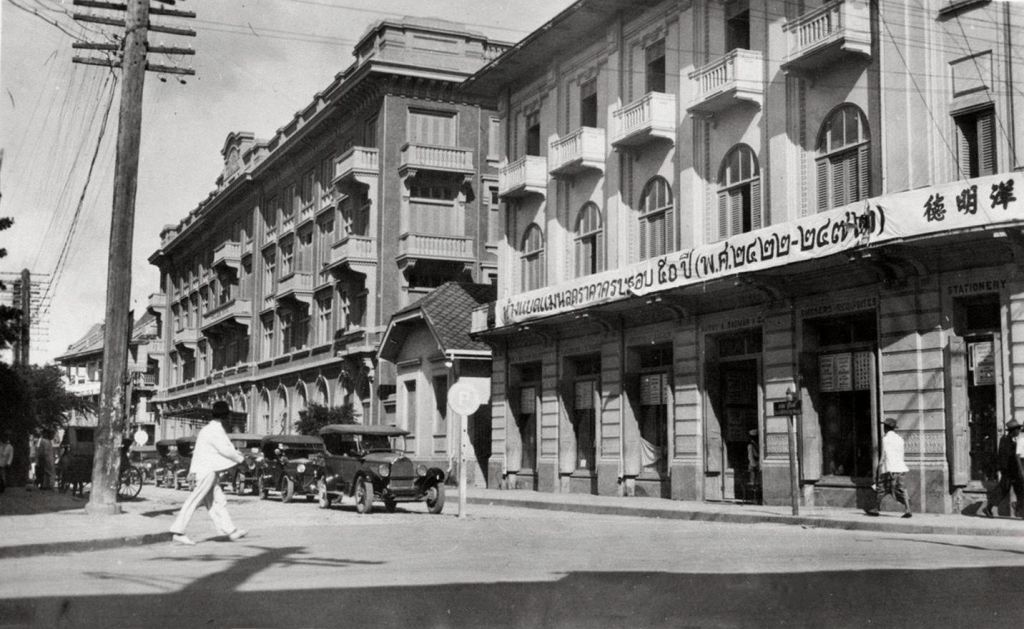|
British Dispensary
British Dispensary Group is a Thai pharmaceutical and cosmetics group of companies, best known for its Snake Brand line of products. It was established as the British Dispensary in 1892 by Western doctors Peter Gowan and Thomas Heyward Hays, and was later acquired by Luan Vongvanij in 1928. The business has since grown under the ownership of the Vongvanij family, and the group now consists of the following companies: The British Dispensary Co., Ltd.; The British Dispensary (L.P.) Co., Ltd.; British Dispensary Consumer Public Co., Ltd.; British Dispensary Health Care Co.,Ltd. and The British Dispensary (L.P.) Sai 5 Co., Ltd. History The British Dispensary was founded in 1892 by Scottish doctor Peter Gowan and American doctor Thomas Heyward Hays, both of whom had been in the service of the government of King Chulalongkorn (Rama V). The business was one among several modern pharmacies that emerged in the country toward the end of the nineteenth century, and was a well known establi ... [...More Info...] [...Related Items...] OR: [Wikipedia] [Google] [Baidu] |
Thomas Heyward Hays
Thomas Heyward Hays (21 September 1854 – 2 February 1924) was an American surgeon who lived and worked in Siam (now Thailand), overseeing some of the country's first hospitals. He arrived in Bangkok with the Presbyterian Mission Agency, and subsequently entered government service, serving as chief physician of the Royal Siamese Navy and head of the Bangrak Hospital (now Lerdsin Hospital). He was also one of the first lecturers at the Royal Medical College (now the Siriraj Hospital Faculty of Medicine). The 1908 publication '' Twentieth Century Impressions of Siam'' describes his biography as follows: Dr. T. Heyward Hays, who now holds the combined positions of Principal Medical Officer to H.S.M.'s Navy, Medical Adviser to the Royal Railway Department, and Superintending Surgeon of the Bangrak Hospital, is one of the oldest medical practitioners in Siam. He obtained his professional training in America, and arriving at Bangkok in October, 1886, he shortly afterwards entered the ... [...More Info...] [...Related Items...] OR: [Wikipedia] [Google] [Baidu] |
Luan Vongvanij
Luan may refer to: Places * Lu'an, a city in Anhui, China * Luan County, Hebei, China * Luan River, Hebei, China Other uses * Luan (surname), a Chinese surname * Luan (mythology), a legendary bird in Chinese mythology * Trees in the genus ''Shorea'', sometimes known as Philippine mahogany ** Plywood, made from luan trees and others in the family Dipterocarpaceae People with the given name Men * Luan Bueno (born 1987), Brazilian footballer * Luan Capanni (born 2000), Brazilian footballer * Luan Chagas (born 1989), Brazilian mixed martial artist * Luan Madson Gedeão de Paiva (born 1990), Brazilian footballer * Luan Qerimi (1929–2018), Albanian actor * Luan Santos (footballer, born 1991) (born 1991), Brazilian footballer * Luan Vieira (born 1993), Brazilian footballer Women * Luan Gabriel (born 1996), Dominican sprinter * Luan Parle, Irish musician, songwriter, and producer * Luan Peters (1946–2017), British actress and singer, born Carol Hirsch * Luan Zhengron ... [...More Info...] [...Related Items...] OR: [Wikipedia] [Google] [Baidu] |
Vongvanij Family
The Vongvanij family ( th, ว่องวานิช, ) is a Thai Chinese family. The family was founded by Luan Vongvanij, a Hainanese immigrant who settled in Siam in 1903 at the age of twelve. In 1928, he acquired the British Dispensary British Dispensary Group is a Thai pharmaceutical and cosmetics group of companies, best known for its Snake Brand line of products. It was established as the British Dispensary in 1892 by Western doctors Peter Gowan and Thomas Heyward Hays, and wa ..., a pharmaceutical company which continues to be owned by the family. The company passed onto his sons Boonchit and Boonyong in 1963 and from Boonyong to his son Anurut in 1993. Notable people with the surname Vongvanij include: * Arnond Vongvanij, Thai golfer References Thai families of Chinese ancestry {{Thailand-bio-stub ... [...More Info...] [...Related Items...] OR: [Wikipedia] [Google] [Baidu] |
Chulalongkorn
Chulalongkorn ( th, จุฬาลงกรณ์, 20 September 1853 – 23 October 1910) was the fifth monarch of Siam under the House of Chakri, titled Rama V. He was known to the Siamese of his time as ''Phra Phuttha Chao Luang'' (พระพุทธเจ้าหลวง, the Royal Buddha). Chulalongkorn's reign was characterised by the modernisation of Siam, governmental and social reforms, and territorial concessions to the British and French. As Siam was surrounded by European colonies, Chulalongkorn, through his policies and acts, ensured the independence of Siam. All his reforms were dedicated to ensuring Siam's independence given the increasing encroachment of Western powers, so that Chulalongkorn earned the epithet ''Phra Piya Maharat'' (พระปิยมหาราช, the Great Beloved King). Early life King Chulalongkorn was born on 20 September 1853 to King Mongkut and Queen Debsirindra and given the name Chulalongkorn. In 1861, he was designated ' ... [...More Info...] [...Related Items...] OR: [Wikipedia] [Google] [Baidu] |
Charoen Krung Road
file:Charoen Krung Road April2021 ถนนเจริญกรุง.jpg, Shophouses along Charoen Krung road with the Sathorn Unique Tower in the vicinity (2021) Charoen Krung Road ( th, ถนนเจริญกรุง, ) is a major road in Bangkok and the first in Thailand to be built using modern construction methods. Built during 1862–1864 in the reign of King Mongkut (Rama IV), it runs from the old city centre in Rattanakosin Island, passes through Chinatown, Bangkok, Bangkok's Chinatown, continues into Bang Rak district, where it formerly served the community of European expatriates, and ends in Bang Kho Laem district, Bang Kho Laem. Construction of the road marked a major change in Bangkok's urban development, with the major mode of transport shifting from water to land. Charoen Krung Road was Bangkok's main street up to the early 20th century, but later declined in prominence. It is still home to many historic buildings and neighbourhoods, which are beset by changes ... [...More Info...] [...Related Items...] OR: [Wikipedia] [Google] [Baidu] |
Surawong Road
Surawong Road ( th, ถนนสุรวงศ์, ) is a road in the Bang Rak District of Bangkok, Thailand, linking Charoen Krung Road to Rama IV Road, Rama IV and forming the boundary between Suriyawong Subdistrict, Suriyawong and Si Lom Subdistrict, Si Lom subdistricts. It was built at the end of the 19th century during Bangkok's period of expansion following the country's opening up to the West, and was home to many leading businesses, upper-class families, and members of the expatriate community. It was known as a Western-style nightlife entertainment district during the 1920s, and was—and still is—home to many leading hotels. The road grew as a business district along with the nearby Si Lom Road during the mid-20th century, but lagged behind in development toward the end of the century due to its limited traffic capacity. Today, it is still home to several historic landmarks, as well as many well-known restaurants. History At the end of the 19th–20th century, the area ... [...More Info...] [...Related Items...] OR: [Wikipedia] [Google] [Baidu] |
Bangkok
Bangkok, officially known in Thai language, Thai as Krung Thep Maha Nakhon and colloquially as Krung Thep, is the capital and most populous city of Thailand. The city occupies in the Chao Phraya River delta in central Thailand and has an estimated population of 10.539 million as of 2020, 15.3 percent of the country's population. Over 14 million people (22.2 percent) lived within the surrounding Bangkok Metropolitan Region at the 2010 census, making Bangkok an extreme primate city, dwarfing Thailand's other urban centres in both size and importance to the national economy. Bangkok traces its roots to a small trading post during the Ayutthaya Kingdom in the 15th century, which eventually grew and became the site of two capital cities, Thonburi Kingdom, Thonburi in 1768 and Rattanakosin Kingdom (1782–1932), Rattanakosin in 1782. Bangkok was at the heart of the modernization of Siam, later renamed Thailand, during the late-19th century, as the country faced pressures from the ... [...More Info...] [...Related Items...] OR: [Wikipedia] [Google] [Baidu] |
Si Kak Phraya Si
Si Kak Phraya Si ( th, สี่กั๊กพระยาศรี, ) is an intersection in area of Wang Burapha Phirom sub-district, Phra Nakhon district, Bangkok. It is the intersection of Charoen Krung, Fueang Nakhon and Ban Mo roads. It is considered to be the second intersection of Charoen Krung, the first official street in Thailand, after nearby Saphan Mon (Mon bridge). The term ''Si Kak Phraya Si'' can mean ''Phraya Si's intersection'' and comes from the Teochew word "角" (''Kak'') meaning ''angle'' or ''corner'' and "四" (''Si'') meaning ''four'', which refers the four-way intersection. Also, Phraya Si (พระยาศรี) is the name of Mon who has a house in this neighbourhood. He was an aristocrat during the reign of King Mongkut (Rama IV) and the leader in the construction of Charoen Krung including Saphan Mon. In addition, there is also Soi Phraya Si (Phraya Si alley), another way named in his honour. It is an alley that connects Fueang Nakhon and Ats ... [...More Info...] [...Related Items...] OR: [Wikipedia] [Google] [Baidu] |
Pharmaceutical Companies Of Thailand
A medication (also called medicament, medicine, pharmaceutical drug, medicinal drug or simply drug) is a drug used to diagnose, cure, treat, or prevent disease. Drug therapy (pharmacotherapy) is an important part of the medical field and relies on the science of pharmacology for continual advancement and on pharmacy for appropriate management. Drugs are classified in multiple ways. One of the key divisions is by level of control, which distinguishes prescription drugs (those that a pharmacist dispenses only on the order of a physician, physician assistant, or qualified nurse) from over-the-counter drugs (those that consumers can order for themselves). Another key distinction is between traditional small molecule drugs, usually derived from chemical synthesis, and biopharmaceuticals, which include recombinant proteins, vaccines, blood products used therapeutically (such as IVIG), gene therapy, monoclonal antibodies and cell therapy (for instance, stem cell therap ... [...More Info...] [...Related Items...] OR: [Wikipedia] [Google] [Baidu] |
Companies Based In Bangkok
A company, abbreviated as co., is a legal entity representing an association of people, whether natural, legal or a mixture of both, with a specific objective. Company members share a common purpose and unite to achieve specific, declared goals. Companies take various forms, such as: * voluntary associations, which may include nonprofit organizations * business entities, whose aim is generating profit * financial entities and banks * programs or educational institutions A company can be created as a legal person so that the company itself has limited liability as members perform or fail to discharge their duty according to the publicly declared incorporation, or published policy. When a company closes, it may need to be liquidated to avoid further legal obligations. Companies may associate and collectively register themselves as new companies; the resulting entities are often known as corporate groups. Meanings and definitions A company can be defined as an "artificial per ... [...More Info...] [...Related Items...] OR: [Wikipedia] [Google] [Baidu] |
1892 Establishments In Siam
Year 189 ( CLXXXIX) was a common year starting on Wednesday (link will display the full calendar) of the Julian calendar. At the time, it was known as the Year of the Consulship of Silanus and Silanus (or, less frequently, year 942 ''Ab urbe condita''). The denomination 189 for this year has been used since the early medieval period, when the Anno Domini calendar era became the prevalent method in Europe for naming years. Events By place Roman Empire * Plague (possibly smallpox) kills as many as 2,000 people per day in Rome. Farmers are unable to harvest their crops, and food shortages bring riots in the city. China * Liu Bian succeeds Emperor Ling, as Chinese emperor of the Han Dynasty. * Dong Zhuo has Liu Bian deposed, and installs Emperor Xian as emperor. * Two thousand eunuchs in the palace are slaughtered in a violent purge in Luoyang, the capital of Han. By topic Arts and sciences * Galen publishes his ''"Treatise on the various temperaments"'' (aka ''O ... [...More Info...] [...Related Items...] OR: [Wikipedia] [Google] [Baidu] |


.jpg)

.jpg)


